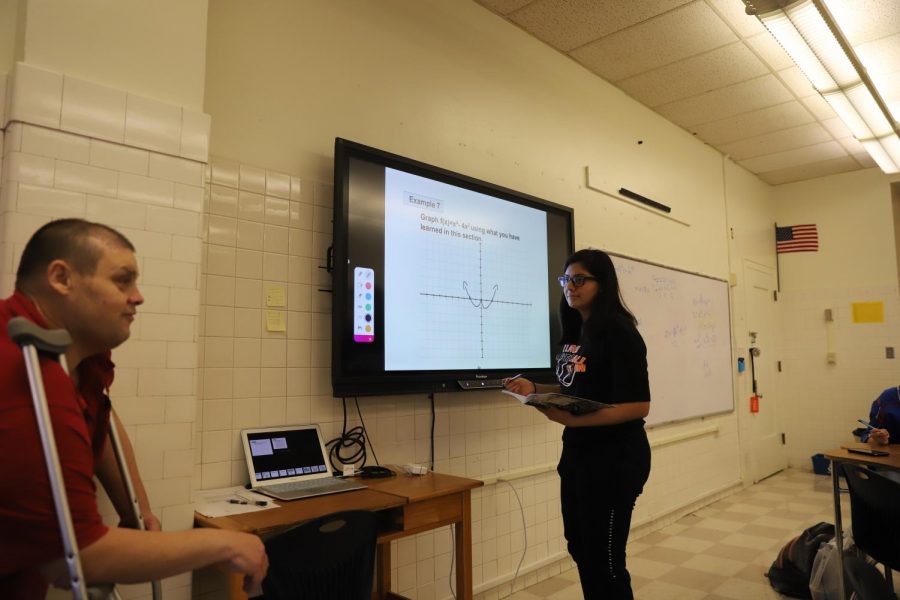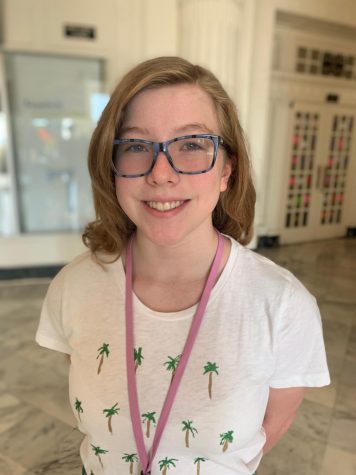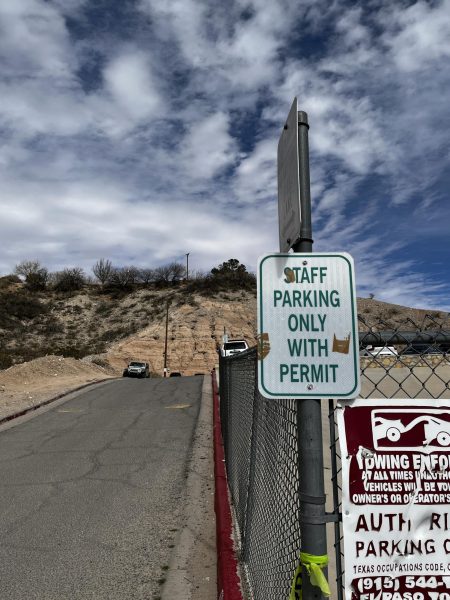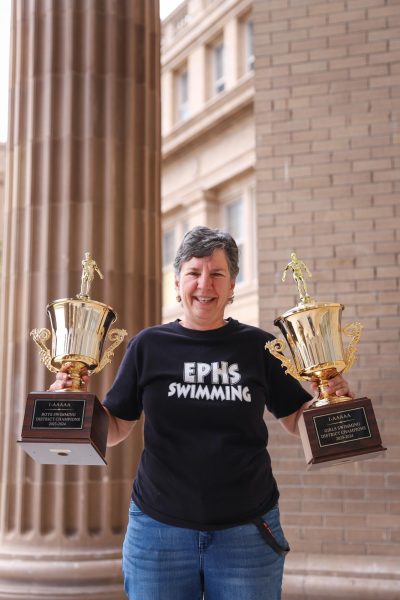Tech friendly classrooms leading the way for learning
Mr. Roger Winter on the left and junior, Elizabeth Prado, stand in front of the the smart board during first period Pre Cal Dual Credit, while demonstrating exponential graphing.
November 15, 2019
Ever since El Paso ISD distributed laptops through the Power-Up program to their high schools in the fall of 2015, the question has been the center of much debate. Many parents and teachers question the true benefits of technology, and wonder how it can be utilized in a classroom. But how well can technology replicate hands-on learning?
Some, like Mrs. Luz Aguirre-Rodriguez, who teaches STEM (science, technology, engineering and math) at El Paso High School, use online simulation before projects.
“They don’t have the experience to transfer the virtual skills into hands on,” Mrs. Aguirre-Rodriguez said. “That’s where I feel something is lacking.”
It’s not only STEM classes that rely on technology, because other classes do as well.
“I have decided to go bookless, so they have everything online,” Spanish teacher, Mrs. Rincon said. “I think we need to keep up with what students need so that they can learn better.”
The school district provides many vital tools for technology access, including Macbook Laptops, and a few management programs.

Senior, Grace Zhao, uses the library’s online catalog for research.
EPISD has began using, in accordance with the laptop computers, an online system that helps the students manage their teachers’ chosen coursework. The district- implemented program, Schoology, has a dashboard designed by the teachers.
There is also another system, Microsoft office 365, that has a cloud where students can store documents and power points. Some teachers, such as Mr. Reese, who teaches AP government, Macroeconomics, and dual credit world history at EPHS, have designed their own teaching site.
“Essentially my Weebly website serves the same function as a traditional printed syllabus did in times past,” Mr. Reese said.
The expectations for teachers jobs have changed with new technology.
As a Dual-Language STEM-program teacher, Mrs. Aguirre-Rodriguez must guide her students to learn technology skills.
“Teachers assume too much,” Mrs. Aguirre-Rodriguez said. “We assume that just because you see the simulation, the students can build it hands on, and that’s a disconnect, because our students are so used to doing it virtually.”
The expectations that teachers set for their students also plays a role in the function of a modern classroom.
“We think that because students are digital natives and they were born in an era of iPhones that they can do all these things, because they have snapchat streaks,” Mrs. Silva, an EPHS librarian, said. “Really we have to teach them how to be good digital citizens, how to find information online that is valid, and how to have academic digital integrity as well.”
There are are two faces of technology, and it can serve as a distraction just as easily as it can help children learn. Some teachers have formal cell phone policies, and others, like Mrs. Silva, simply ask their students to disable push notifications on their devices.
“Sometimes it can be really overwhelming to have access to social media all the time,” Mrs. Silva said. “Human interaction is really important, and right now, as teenagers, you’re at a crucial stage of learning social niceties and that is hard to do with a screen in front of your face.”







